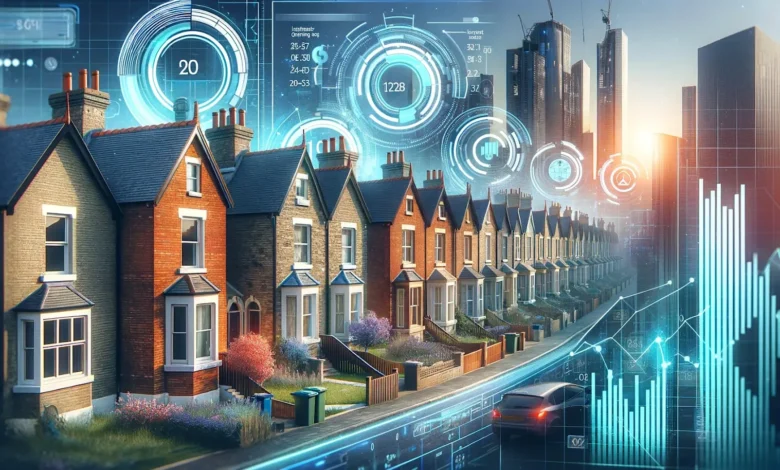How Tech, Design, and Real Estate Trends Are Shaping the Future of Digital Business in 2025

The digital business landscape is evolving faster than ever before. In 2025, we’re seeing industries that once felt separate like technology, design, and real estate merge to create new opportunities and challenges. Whether it’s startups revolutionizing property tech (PropTech), designers rethinking user experiences for virtual workspaces, or SaaS companies providing smarter tools for businesses, the future is all about integration. These changes aren’t just reshaping how companies operate; they’re redefining how people live, work, and connect.
Digital transformation is no longer an optional upgrade it’s a survival strategy. Businesses that embrace AI-driven tools, prioritize user-centered design, and invest in scalable platforms are outperforming competitors stuck in traditional models. The line between physical and digital continues to blur, especially in sectors like real estate, where virtual tours and digital property management have become standard expectations. For entrepreneurs, understanding these intersecting trends isn’t just beneficial; it’s critical for long-term success.
Technology at the Core of Modern Branding
One of the most visible shifts is how technology now underpins brand identity. Gone are the days when logos and design elements were static; today, businesses use dynamic tools to craft visuals that adapt across platforms. A PFP creator allows brands and even individuals like real estate agents or SaaS founders to design professional, cohesive profile images in minutes. This might seem like a small detail, but in an era where first impressions are made online, a polished digital identity can mean the difference between being remembered or overlooked.
The same principle applies to broader branding strategies. Companies are leaning into AI-powered design solutions that streamline content creation, automate social media visuals, and ensure brand consistency at scale. As customer attention spans shrink, businesses that convey professionalism and creativity instantly even in something as simple as a profile picture hold a clear advantage.
The Rise of PropTech and Real Estate Innovation
Real estate is undergoing one of its biggest transformations in decades, largely driven by technology. Virtual reality (VR) tours, AI-driven property recommendations, and blockchain-based transactions are becoming mainstream. Homebuyers can now tour properties from their living rooms, compare mortgage rates in real time, and sign contracts digitally. For real estate professionals, these innovations mean reduced costs, faster deals, and a more seamless experience for clients.
On the commercial side, smart building technologies are reshaping how spaces are managed. Sensors that monitor energy usage, predictive maintenance powered by AI, and coworking models supported by cloud platforms are changing what tenants expect from modern properties. As remote and hybrid work models continue, demand for flexible spaces is pushing real estate companies to innovate or risk falling behind.
Design Thinking Across All Industries
Design is no longer confined to aesthetics; it’s become a strategic driver for business growth. Whether you’re in SaaS, real estate, or e-commerce, user experience (UX) design determines how customers interact with your product and whether they stick around. In 2025, companies are investing in minimalist, intuitive interfaces that remove friction from every step of the user journey.
Real estate apps, for example, prioritize clean navigation and clear visuals, allowing users to browse listings without feeling overwhelmed. SaaS platforms focus on onboarding flows that help customers achieve value within minutes, not days. Across the board, the trend is the same: simplify, personalize, and humanize.
Marketing and Business Growth in the Digital Era
The convergence of technology, design, and real estate creates fertile ground for new marketing strategies. Brands are moving away from mass campaigns toward hyper-personalized outreach. AI tools analyze user behavior, predict preferences, and deliver content tailored to individual needs. Social proof in the form of testimonials, case studies, and influencer collaborations plays a huge role in building trust.
Real estate marketing, for instance, now blends high-quality virtual staging with data-driven targeting. SaaS companies leverage content marketing, webinars, and community-building to nurture long-term relationships. Regardless of industry, the emphasis is on providing genuine value rather than pushing hard sales.
The Human Element: Why Authenticity Matters
Amid all the tech advancements, one truth remains constant: people crave authenticity. A beautifully designed platform or innovative SaaS tool means little if customers don’t trust the brand behind it. Companies that communicate openly, highlight real stories, and align with values like sustainability or social responsibility stand out in crowded markets.
Real estate buyers, for example, increasingly want to know not just the price of a home, but also its environmental impact and the story of the neighborhood. SaaS customers prefer companies that listen to feedback and build features based on real user needs rather than chasing trends. In short, technology enhances business, but authenticity sustains it.
Looking Ahead: Where the Trends Converge
By 2030, experts predict even deeper integration of tech and design into real estate and broader business models. Augmented reality (AR) property tours, AI-driven market forecasting, and fully digital closings may become industry norms. At the same time, the rise of personal branding tools from profile picture creators to AI-driven logo makers will empower individuals to compete in spaces once reserved for big players.
Businesses that understand this convergence will thrive. Those that resist? They risk being left behind in a market that rewards agility and innovation.



